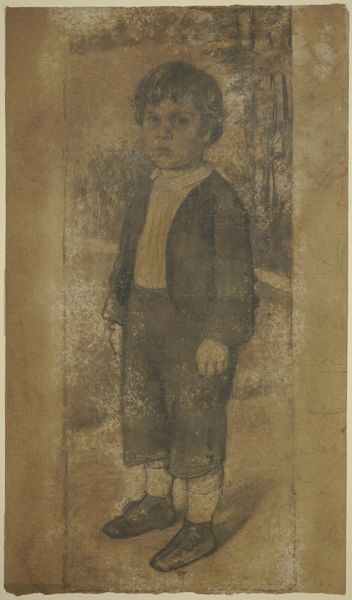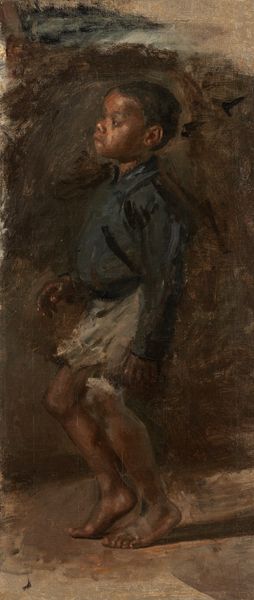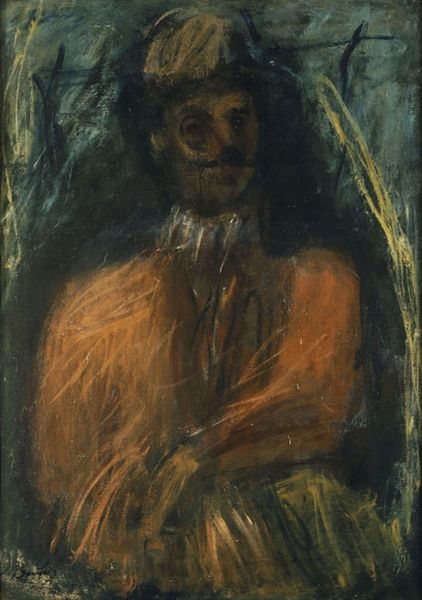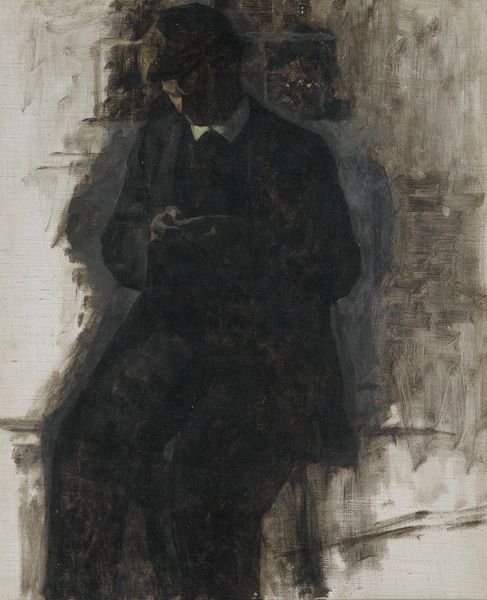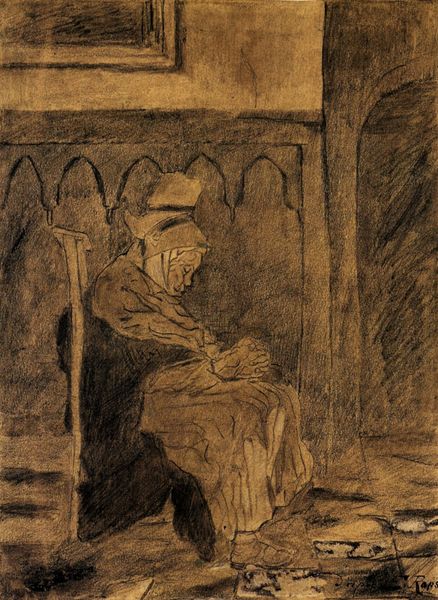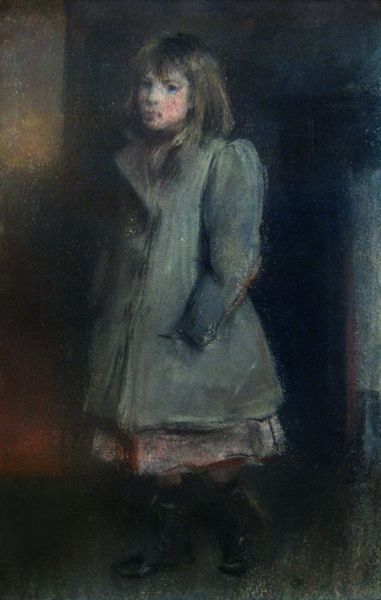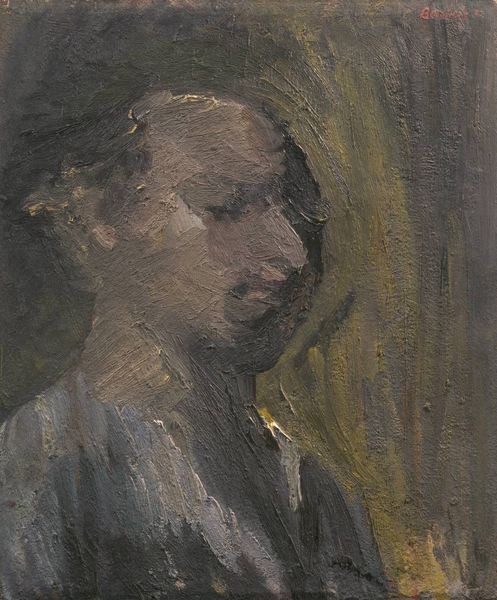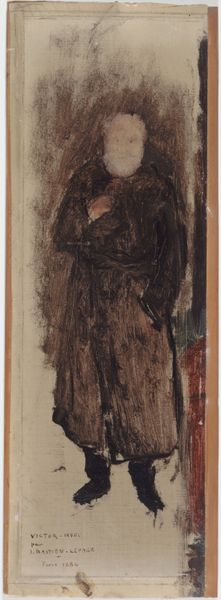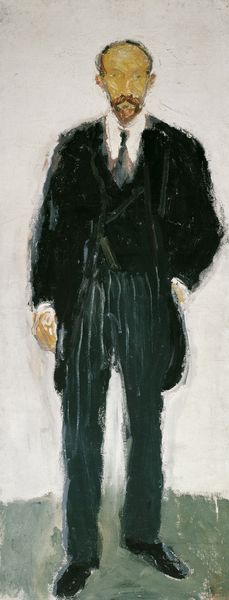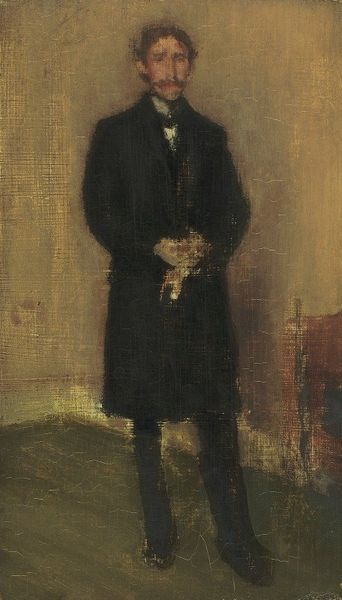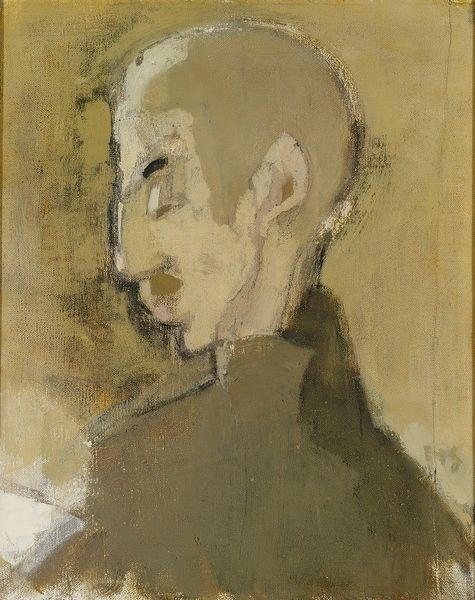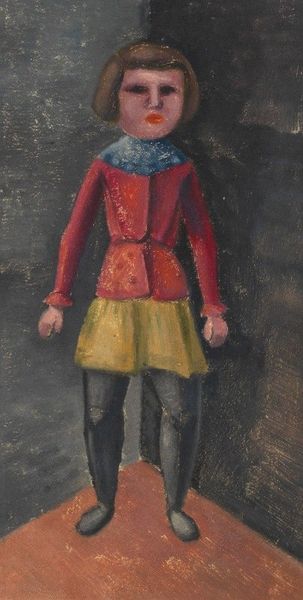
#
abstract painting
#
charcoal drawing
#
possibly oil pastel
#
charcoal art
#
oil painting
#
acrylic on canvas
#
underpainting
#
painting painterly
#
charcoal
#
watercolor
Copyright: Public domain
Curator: Here we have Eugène Carrière's portrait of Georges Clemenceau. Though undated, its painterly style firmly situates it within the late 19th-century French art scene. Editor: My first impression is that the figure seems to be emerging from a kind of fog, the earth-toned palette lending an air of both authority and melancholy. Curator: Carrière was celebrated for his distinctive tonalist approach. His limited palette—often browns and grays—created a sense of intimacy and introspection. Clemenceau, a major figure in French politics, is portrayed with an almost ghostly presence. One might read it as commentary on the fleeting nature of power, especially given Clemenceau’s complicated political history, being a dominant actor and at times pushed out of favour. Editor: Notice the careful orchestration of light and shadow. There's a strategic blurring of form, directing the viewer's gaze to the face. The hands, though present, are almost completely abstracted. This certainly focuses our attention. Considering Clemenceau’s nickname "The Tiger", do you think Carrière was contrasting this potent persona with the fragility and universality of human existence? Curator: Precisely. Carrière often depicted figures in this liminal state, capturing their psychological essence rather than striving for photorealistic accuracy. Given Clemenceau’s position, there’s likely a commentary here about the relationship between public persona and the interior self. This work speaks volumes about how we understand our leaders in a political and sociological framework. Editor: Symbolically, the sepia tones evoke nostalgia and history. The blending of the figure with the background also conveys how an individual can be both powerful and vulnerable. It creates a multi-layered, complex visual that encapsulates aspects of identity, perception and history. Curator: Absolutely, and in recognizing those aspects and the history that led to that positionality, we gain insights into the human condition across contexts. Editor: It all adds up to a fascinating portrait.
Comments
No comments
Be the first to comment and join the conversation on the ultimate creative platform.
